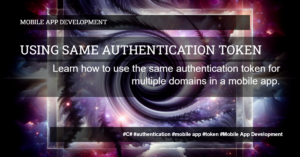Introduction to Websockets
Websockets provide a mechanism for bi-directional communication between clients and servers over a single, long-lived connection. Unlike traditional HTTP requests, Websockets allow for real-time, low-latency communication, making them ideal for applications that require instant updates, such as chat applications, real-time dashboards, and collaborative editing tools.
Setting up a Websocket Server
To implement a Websocket API in C#, we can use libraries like WebSocketSharp or SignalR. These libraries provide abstractions and utilities to simplify the process.
Let’s demonstrate how to set up a basic Websocket server using the WebSocketSharp library:
using WebSocketSharp;
using System;
public static void Main(string[] args)
{
var wssv = new WebSocketServer("ws://localhost:8080");
wssv.OnMessage += (sender, e) =>
{
// Handle incoming messages
Console.WriteLine("Received Message: " + e.Data);
// Reply to the client
wssv.Send("Server: " + e.Data);
};
wssv.Start();
Console.WriteLine("Server Started");
Console.ReadKey(true);
wssv.Stop();
}
In the above example, we create a WebSocketServer instance and configure it to listen on ws://localhost:8080. We handle incoming messages in the OnMessage event, where we can perform any required processing or send replies back to the client.
Connecting to the Websocket Server
Once the Websocket server is up and running, clients can connect to it using compatible Websocket clients or browser APIs like JavaScript’s WebSocket object.
Here’s an example of how a client can connect to the server using JavaScript:
const socket = new WebSocket("ws://localhost:8080");
socket.onopen = (event) => {
console.log("Connection established");
};
socket.onmessage = (event) => {
console.log("Received Message: " + event.data);
};
socket.onclose = (event) => {
console.log("Connection closed");
};
The above code creates a new WebSocket instance and connects it to the server’s URL. It then handles the onopen, onmessage, and onclose events to perform the required actions when the connection is established, when messages are received, and when the connection is closed, respectively.
Handling Messages in the Websocket Server
In the Websocket server, we can handle incoming messages within the OnMessage event. Depending on the requirements of your application, you can perform various tasks, such as:
- Broadcasting the message to all connected clients
- Storing the message in a database
- Triggering specific actions based on the message content
Here’s an example of broadcasting a message to all connected clients:
wssv.OnMessage += (sender, e) =>
{
// Broadcast the message to all connected clients
wssv.WebSocketServices.Broadcast("Server: " + e.Data);
};
In this example, we use the Broadcast method to send the message to all connected clients. This allows for real-time updates across all clients connected to the server.
Implementing Security Measures
When implementing a Websocket API, it’s crucial to consider security measures to protect against potential vulnerabilities. Some key security measures to implement include:
- Authentication and Authorization: Only allow authenticated and authorized clients to connect to the Websocket server.
- Message Validation: Validate incoming messages to ensure they meet specific criteria or adhere to a predefined format.
- Rate Limiting: Implement rate-limiting mechanisms to prevent abuse or unauthorized access.
- Encryption: Use secure protocols such as SSL/TLS to encrypt communication between the server and clients.
By incorporating these security measures, you can ensure the integrity and security of your Websocket API.
Conclusion
Implementing a Websocket API in C# allows for real-time communication between clients and servers, enabling interactive and responsive applications. By following the steps outlined in this guide and considering security measures, you can create robust and secure Websocket APIs for your applications. Happy coding!



